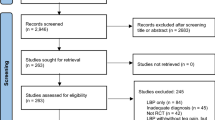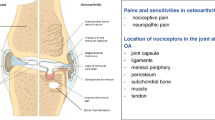Abstract
Background
Web-based questionnaires have become popular, however, access to the Internet can be biased regarding age, gender, and education, among other factors. Therefore, it is unknown whether this is a reasonable avenue to administer a questionnaire to patients or whether Web-based can be a reliable alternative to paper-based.
Questions/purposes
We determined whether the Internet version of the Toronto Extremity Salvage Score is reproducible compared with the paper-based version and the compliance and completion rates.
Patients and Methods
The study population consisted of 81 adults who had had surgery for a musculoskeletal tumor of the lower extremity more than 12 months earlier. The Toronto Extremity Salvage Score was administered by paper at a baseline interview and then readministered via Internet 7 to 14 days later to those with access.
Results
Sixty of the 81 patients (74%) were able to use the Internet. Increasing age and lower education levels were correlated with a lower likelihood of using the Internet. Questionnaires were done online and on paper by 56 patients but 10 were excluded because of self-reported change in circumstances. The mean TESS was 85.7 (range, 41.1–100; SD, 17.26) for the paper-based questionnaire and 85.2 (range, 42.5–100; SD, 17.47) for the Internet-based questionnaire. The intraclass correlation coefficient was 0.97.
Conclusions
The questionnaire can be transferred successfully to the Internet and can be used reliably instead of a paper-based instrument. Recruitment to use an Internet-based questionnaire is limited only by the percentage of patients able to access and use the Internet.

Similar content being viewed by others
References
Athale N, Sturley A, Skoczen S, Kavanaugh A, Lenert L. A web-compatible instrument for measuring self-reported disease activity in arthritis. J Rheumatol. 2004;31:223–228.
Bälter KA, Bälter O, Fondell E, Lagerros YT. Web-based and mailed questionnaires: a comparison of response rates and compliance. Epidemiology. 2005;16:577–579.
Bliven BD, Kaufman SE, Spertus JA. Electronic collection of health-related quality of life data: validity, time benefits, and patient preference. Qual Life Res. 2001;10:15–22.
Buchanan T, Smith JL. Using the Internet for psychological research: personality testing on the World Wide Web. Br J Psychol. 1999;90:125–144.
Bush N, Donaldson G, Moinpour C, Haberman M, Milliken D, Markle V, Lauson J. Development, feasibility and compliance of a web-based system for very frequent QOL and symptom home self-assessment after hematopoietic stem cell transplantation. Qual Life Res. 2005;14:77–93.
Bushnell DM, Martin ML, Parasuraman B. Electronic versus paper questionnaires: a further comparison in persons with asthma. J Asthma. 2003;40:751–762.
Cals JW, Boumans D, Lardinois RJ, Gonzales R, Hopstaken RM, Butler CC, Dinant GJ. Public beliefs on antibiotics and respiratory tract infections: an internet-based questionnaire study. Br J Gen Pract. 2007;57:942–947.
Cantrell MA, Lupinacci P. Methodological issues in online data collection. J Adv Nurs. 2007;60:544–549.
Davis AM, Bell RS, Badley EM, Yoshida K, Williams JI. Evaluating functional outcome in patients with lower extremity sarcoma. Clin Orthop Relat Res. 1999;358:90–100.
Davis AM, Sennik S, Griffin AM, Wunder JS, O’Sullivan B, Catton CN, Bell RS. Predictors of functional outcomes following limb salvage surgery for lower-extremity soft tissue sarcoma. J Surg Oncol. 2000;73:206–211.
Davis AM, Wright JG, Williams JI, Bombardier C, Griffin A, Bell RS. Development of a measure of physical function for patients with bone and soft tissue sarcoma. Qual Life Res. 1996;5:508–516.
Davis RN. Web-based administration of a personality questionnaire: comparison with traditional methods. Behav Res Methods Instrum Comput. 1999;31:572–577.
Edwards P, Roberts I, Clarke M, DiGuiseppi C, Pratap S, Wentz R, Kwan I. Increasing response rates to postal questionnaires: systematic review. BMJ. 2002;324:1183–1191.
Ekman A, Dickman PW, Klint A, Weiderpass E, Litton JE. Feasibility of using Web-based questionnaires in large population-based epidemiological studies. Eur J Epidemiol. 2006;21:103–111.
Ekman A, Klint A, Dickman PW, Adami HO, Litton JE. Optimizing the design of Web-based questionnaires: experience from a population-based study among 50,000 women. Eur J Epidemiol. 2007;22:293–300.
Enneking W. Modification of the system for functional evaluation in the surgical management of musculoskeletal tumours. In: Enneking W, ed. Limb Salvage in Musculoskeletal Oncology. New York, NY: Churchill Livingstone; 1987;626–639.
Enneking WF, Dunham W, Gebhardt MC, Malawar M, Pritchard DJ. A system for the functional evaluation of reconstructive procedures after surgical treatment of tumors of the musculoskeletal system. Clin Orthop Relat Res. 1993;286:241-246.
Gerrand CH, Wunder JS, Kandel RA, O’Sullivan B, Catton CN, Bell RS, Griffin AM, Davis AM. The influence of anatomic location on functional outcome in lower-extremity soft-tissue sarcoma. Ann Surg Oncol. 2004;11:476–482.
Gilmour JA, Scott SD, Huntington N. Nurses and Internet health information: a questionnaire survey. J Adv Nurs. 2008;61:19–28.
Hanscom B, Lurie JD, Homa K, Weinstein JN. Computerized questionnaires and the quality of survey data. Spine (Phila Pa 1976). 2002;27:1797–1801.
Harewood GC, Yacavone RF, Locke GR 3rd, Wiersema MJ. Prospective comparison of endoscopy patient satisfaction surveys: e-mail versus standard mail versus telephone. Am J Gastroenterol. 2001;96:3312–3317.
Joinson A. Social desirability, anonymity, and Internet-based questionnaires. Behav Res Methods Instrum Comput. 1999;31:433–438.
Jones JB, Snyder CF, Wu AW. Issues in the design of Internet-based systems for collecting patient-reported outcomes. Qual Life Res. 2007;16:1407–1417.
Jones R, Pitt N. Health surveys in the workplace: comparison of postal, email and World Wide Web methods. Occup Med (Lond). 1999;49:556–558.
Khalily C, Behnke S, Seligson D. Treatment of closed tibia shaft fractures: a survey from the 1997 Orthopaedic Trauma Association and Osteosynthesis International-Gerhard Kuntscher Kreis meeting. J Orthop Trauma. 2000;14:577–581.
Kim HL, Gerber GS, Patel RV, Hollowell CM, Bales GT. Practice patterns in the treatment of female urinary incontinence: a postal and internet survey. Urology. 2001;57:45–48.
Kongsved SM, Basnov M, Holm-Christensen K, Hjollund NH. Response rate and completeness of questionnaires: a randomized study of internet versus paper-and-pencil versions. J Med Internet Res. 2007;9:e25.
Kumle M, Weiderpass E, Braaten T, Persson I, Adami H, Lund E. Use of oral contraceptives and breast cancer risk: The Norwegian-Swedish Women’s Lifestyle and Health Cohort Study. Cancer Epidemiol Biomarkers Prev. 2002;11:1375–1381.
Lampert MH, Gerber LH, Glatstein E, Rosenberg SA, Danoff JV. Soft tissue sarcoma: functional outcome after wide local excision and radiation therapy. Arch Phys Med Rehabil. 1984;65:477–480.
Leece P, Bhandari M, Sprague S, Swiontkowski MF, Schemitsch EH, Tornetta P, Devereaux PJ, Guyatt GH. Internet versus mailed questionnaires: a controlled comparison (2). J Med Internet Res. 2004;6:e39.
Matarasso A, Elkwood A, Rankin M, Elkowitz M. National plastic surgery survey: face lift techniques and complications. Plastic Reconstr Surg. 2000;106:1185–1195; discussion 1196.
Meropol NJ, Egleston BL, Buzaglo JS, Benson AB 3rd, Cegala DJ, Diefenbach MA, Fleisher L, Miller SM, Sulmasy DP, Weinfurt KP; CONNECT Study Research Group. Cancer patients’ preferences for quality and length of life. Cancer. 2008;113:3459–3466.
O’Leary TE, Diller L, Recklitis CJ. The effects of response bias on self-reported quality of life among childhood cancer survivors. Qual Life Res. 2007;16:1211–1220.
Ritter P, Lorig K, Laurent D, Matthews K. Internet versus mailed questionnaires: a randomized comparison. J Med Internet Res. 2004;6:e29.
Robinson MH, Spruce L, Eeles R, Fryatt I, Harmer CL, Thomas JM, Westbury G. Limb function following conservation treatment of adult soft tissue sarcoma. Eur J Cancer. 1991;27:1567–1574.
Saleh KJ, Radosevich DM, Kassim RA, Moussa M, Dykes D, Bottolfson H, Gioe TJ, Robinson H. Comparison of commonly used orthopaedic outcome measures using palm-top computers and paper surveys. J Orthop Res. 2002;20:1146–1151.
Schreiber D, Bell RS, Wunder JS, O’Sullivan B, Turcotte R, Masri BA, Davis AM. Evaluating function and health related quality of life in patients treated for extremity soft tissue sarcoma. Qual Life Res. 2006;15:1439–1446.
Shrout PE, Fleiss JL. Intraclass correlations: uses in assessing rater reliability. Psych Bull. 1979;86:420–428.
Smith B, Smith TC, Gray GC, Ryan MA; Millennium Cohort Study Team. When epidemiology meets the Internet: Web-based surveys in the Millennium Cohort Study. Am J Epidemiol. 2007;166:1345–1354.
Sugarbaker PH, Barofsky I, Rosenberg SA, Gianola FJ. Quality of life assessment of patients in extremity sarcoma clinical trials. Surgery. 1982;91:17–23.
Surveymonkey.com. Available at: https://www.surveymonkey.com/Default.aspx. Accessed July 29, 2010.
World Health Organization. International Classification of Impairments, Disabilities and Handicaps. Geneva, Switzerland: World Health Organization; 1990.
Wilson AS, Kitas GD, Carruthers DM, Reay C, Skan J, Harris S, Treharne GJ, Young SP, Bacon PA. Computerized information-gathering in specialist rheumatology clinics: an initial evaluation of an electronic version of the Short Form 36. Rheumatology (Oxford). 2002;41:268–273.
Acknowledgment
We thank Thomas Sullivan, Lecturer in the Data Management and Analysis Centre, Discipline of Public Health, University of Adelaide, for assistance with the statistical assessments.
Author information
Authors and Affiliations
Corresponding author
Additional information
Each author certifies that he or she has no commercial associations (eg, consultancies, stock ownership, equity interest, patent/licensing arrangements, etc) that might pose a conflict of interest in connection with the submitted article.
Each author certifies that the human protocol for this investigation was approved by an Institutional Ethics Research Committee, that all investigations were conducted in conformity with ethical principles of research, and that informed consent for participation in the study was obtained.
This work was performed at the Royal Adelaide Hospital.
About this article
Cite this article
Clayer, M., Davis, A. Can the Toronto Extremity Salvage Score Produce Reliable Results When Used Online?. Clin Orthop Relat Res 469, 1750–1756 (2011). https://doi.org/10.1007/s11999-010-1715-8
Received:
Accepted:
Published:
Issue Date:
DOI: https://doi.org/10.1007/s11999-010-1715-8




